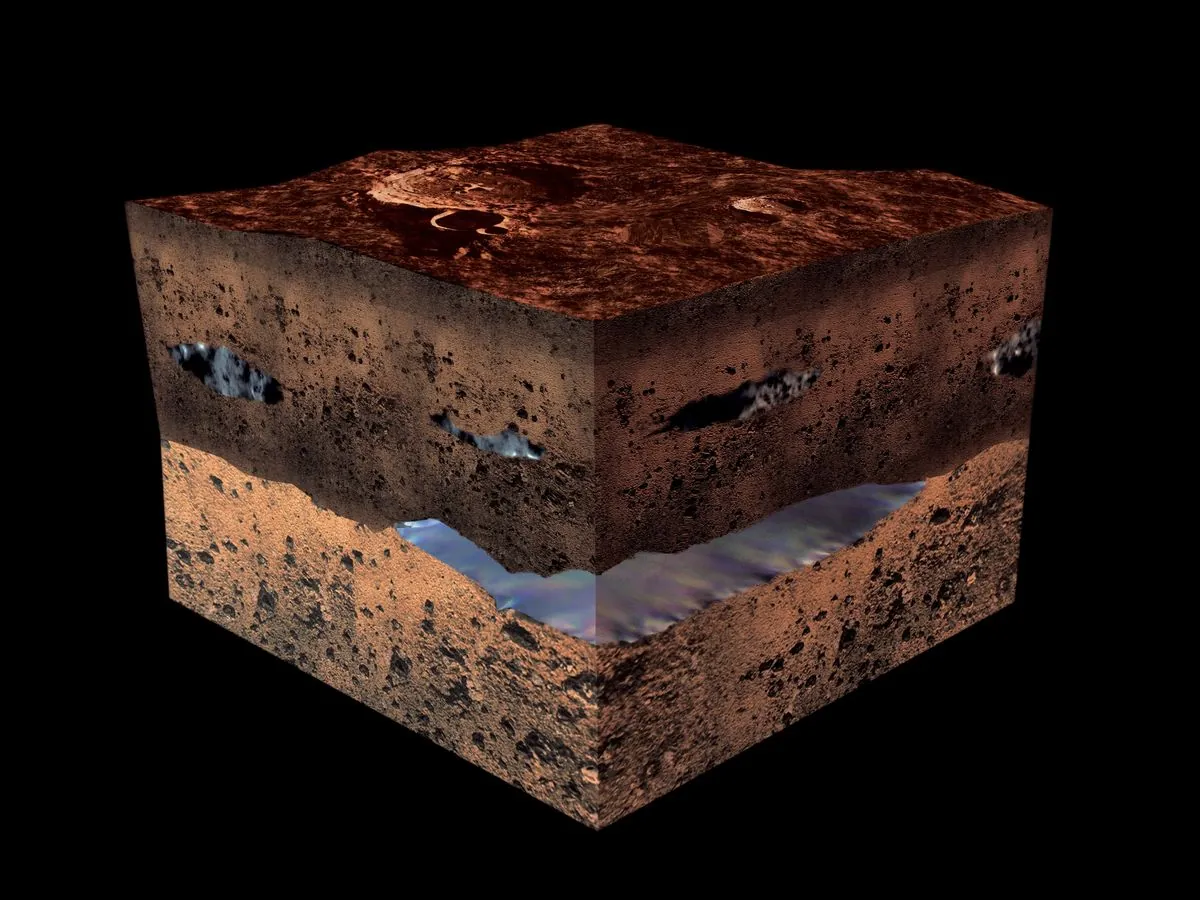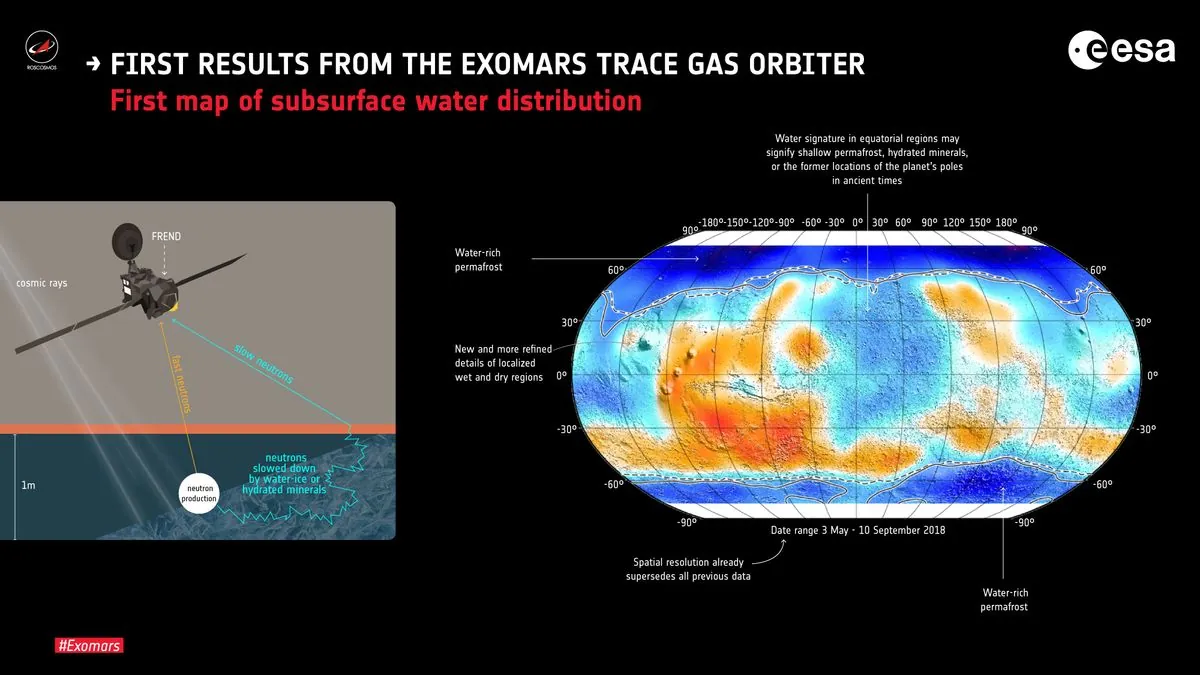Mars May Harbor Vast Underground Water Reserves, Study Suggests
New research based on Mars InSight lander data indicates potential underground water on Mars. If confirmed, it could form a global ocean, suggesting possible habitable environments beneath the surface.

Recent findings from NASA's Mars InSight lander suggest that the Red Planet may possess substantial water reserves beneath its surface. This groundbreaking research, published in the Proceedings of the National Academy of Sciences, indicates that Mars could potentially harbor enough subsurface water to form a global ocean.
The study, led by Vashan Wright of the University of California San Diego's Scripps Institution of Oceanography, analyzed seismic data collected by the InSight lander. The spacecraft, which ceased operations in 2022, recorded over 1,300 marsquakes during its four-year mission from 2018 to 2022.
Scientists believe the water may be located 11.5 to 20 kilometers below the Martian crust. This underground reservoir likely originated from surface water that existed billions of years ago when Mars boasted rivers, lakes, and possibly oceans. The planet's surface water is thought to have disappeared as its atmosphere thinned over time, transforming Mars into the arid world we observe today.

While the presence of water doesn't necessarily indicate the existence of life, Wright emphasized that these findings suggest the potential for habitable environments. However, confirming the presence of water and searching for signs of microbial life would require advanced drilling equipment and further exploration.
The research team combined computer models with InSight's seismic readings to determine that underground water was the most plausible explanation for the observed data. If the findings at InSight's landing site, Elysium Planitia near Mars' equator, are representative of the entire planet, the subsurface water could form a global ocean 1 to 2 kilometers deep.
Mars, the fourth planet from the Sun, has long fascinated scientists and the public alike. Its reddish appearance, caused by iron oxide on its surface, has earned it the nickname "Red Planet." Despite its current inhospitable conditions, with an average temperature of -63°C, Mars shares some similarities with Earth, including a similar day length and the presence of seasons due to its axial tilt.
The planet boasts remarkable features, including Olympus Mons, the largest volcano in the Solar System, and Valles Marineris, one of the largest canyons. Mars also has two small moons, Phobos and Deimos, and polar ice caps composed of water and dry ice.
Over the years, numerous missions have been sent to Mars, with the first successful landing achieved by NASA's Viking 1 in 1976. These missions have provided valuable data about the planet's geology, atmosphere, and potential for hosting life.
As scientists continue to analyze the wealth of data collected by the InSight lander, our understanding of Mars' interior and its potential for harboring water and possibly life continues to evolve. The possibility of terraforming Mars remains a subject of scientific speculation, highlighting the ongoing fascination with our planetary neighbor.
"Instead, our findings mean that there are environments that could possibly be habitable."
This research not only sheds light on Mars' potential water resources but also contributes to our broader understanding of planetary formation and the potential for life beyond Earth. As we continue to explore the Red Planet, each discovery brings us closer to unraveling the mysteries of our solar system and the possibility of extraterrestrial life.


































